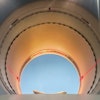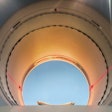By Cherrill Farnsworth
An atmosphere of subdued panic looms over the radiology community following the April 7, 2000 publication of the Health Care Financing Administration’s (HCFA) final regulation implementing a new payment system for hospital outpatient radiology services.
Because freestanding radiology centers had been granted relief in the past, there was hope that the new prospective payment system, based on ambulatory payment classifications (APCs), would be fair. Yet despite intense discussion and prolonged petitioning on behalf of radiologists, HCFA ignored many physician costs associated with outpatient radiological procedures, cutting the technical component of the payments by about 30%. Only cancer hospitals and the outpatient radiology departments of designated cancer hospitals have escaped the latest cuts.
The system's most glaring shortcoming lies in HCFA’s decision to reimburse outpatient departments on a flat-fee basis for CT, MRI, and ultrasound, ignoring extra sequences or the use of contrast media and other supply codes. Departments that perform contrast-enhanced studies or extra sequences will not be reimbursed for these quality-enhancing decisions under HCFA’s new APC regulation.
Although HCFA says the APCs will increase overall hospital reimbursement by approximately 4%, radiology reimbursement will drop by about 30%. Other specialties may see significant increases under the system, but reimbursement for hospital-based outpatient radiology has been severely deflated.
Reinventing outpatient radiology
In response to the cuts, the radiology community has begun evaluating the new APCs before their July 1, 2000 implementation with an eye toward finding ways to work around the new regulations. As the Budget Reconciliation Act kept reimbursement stable almost across the board to freestanding radiological facilities, many hospitals have begun to reevaluate their hospital-based outpatient diagnostic imaging services.
Diane Millman, a partner at McDermott, Will & Emory in Washington, DC, has advised the National Coalition for Quality Diagnostic Imaging Services (NCQDIS) that hospitals must evaluate the cuts and their effects on revenue after July 1, 2000. They should also consider the potential value of restructuring outpatient hospital facilities as freestanding clinics.
McDermott has stated that the onerous nature of the APC regulation -- which includes a lengthy list of requirements that must be met in order for a facility to fall under the new rules -- may be favorable for a hospital-based radiology outpatient department. The new regulations state that any type of joint venture, or any facility that uses a non-hospital management company, will not be subject to the APCs.
The regulations also state that facilities that do not bill with a hospital provider number will fall outside the purview of the APCs. Consequently, hospitals might choose to restructure their outpatient radiology departments as independent diagnostic testing facilities (IDTFs), which would free the facilities from the burden of reduced reimbursement. As any changes to the APCs will require lengthy lobbying efforts, hospitals and outpatient radiology centers must evaluate their options in order to preserve revenue for the time being.
In crafting a response to the new regulations, hospitals must analyze the positive and negative consequences of restructuring. For example, hospitals that structure their hospital-based outpatient radiology facilities as IDTFs, as joint ventures, or by bringing in an outside billing company in order to fall under the freestanding facility reimbursement schedule, will not be able to list the costs of the facility on their Medicare cost reports.
However, most scenarios reveal the overriding benefits of restructuring, even considering the lost facility costs on the Medicare cost report. With an eye to caution, NCQDIS will request a formal answer from HCFA on the legality of such restructuring, but Millman believes that restructuring stems from a very straightforward part of the new regulations, and she anticipates positive confirmation from HCFA. If restructuring is HCFA-sanctioned, an opportunity may exist for freestanding radiology companies to work closely with hospitals to facilitate the process.
Wide-ranging effects
The new APCs will have a ripple effect that touches every aspect of today’s hospital-based outpatient radiology industry. For example, hospitals will likely slow the purchase of new equipment and the building of new outpatient radiology departments. At the same time, joint-venture partners are likely to step up the pace of equipment purchasing and department construction.
Since contrast agents are no longer reimbursable, hospitals will become reluctant to fund their use without written physician protocols indicating their absolute necessity. These potential protocols will result in unwelcome paperwork and more oversight hassle for overworked radiologists. And while the contrast media industry will find the new scheme damaging to its bottom line, the APCs do not affect radiopharmaceuticals, making strong growth likely in this product area. In addition, the APCs provide reimbursement for drugs and devices that could not have been billed before 1996.
Companies with products or services that can qualify as a new drug, device, or procedure are scrambling to file under this section of the legislation and have their products or services designated as reimbursable. Also, radiology product and contrast manufacturers will reevaluate their existing products and technologies to see what additions can be made to qualify them for this status under the new APCs.
In order to qualify as a new technology or service or as a pass-through item, a formal application for each category must be filed with HCFA. Several manufacturers in the radiology industry already have filed, and HCFA provides a list of products designated as exempt from the new APCs upon request. And there is another light at the end of this tunnel: The new-technologies qualification in the new APC regulation will promote technological innovation that should occur quickly, as there will be strong incentives to purchase new technologies in order to be reimbursed for needed products and services.
A call to action
A movement is now underway to change the APCs, and it's highly likely the new regulation will be revised. However, any changes will take time and effort. The only way to prepare for the July 1, 2000, implementation is to evaluate the situation with an eye to making sound business decisions.
Physicians must embrace change and innovation in order to overcome the difficulties the APCs will engender. The new system will find some individuals prospering under the growing entrepreneurial opportunity for freestanding imaging centers, including those who run the specialty chains that own and operate multiple freestanding sites, which will likely enter into mutually beneficial arrangements with hospitals. Radiologists should act now to reduce overhead costs, and thus partially offset lower reimbursement.
Those in the healthcare community who embrace change and begin to strategize now will pull ahead in spite of the new rules. However, they must act quickly -- the new APCs become effective on July 1, 2000. HCFA will not wait for radiologists to fully prepare for the changes ahead, and those who are oblivious to the implications of the system will be left behind.
While preparing their facilities for the new APCs, radiologists must also contribute to the grassroots lobbying efforts now underway to change the regulations. Without the force of the radiology community behind it, the constant petitioning of a few driven groups will not succeed. And if the new reimbursement strategy is not revised, the current cuts will eventually apply to freestanding facilities as well.
The time to act is now. Every voice that can speak must tell HCFA that the new system cannot support quality outpatient services at a hospital or anywhere else. Take the time to participate in the NCQDIS lobbying efforts that began in Washington, DC, in May.
NCQDIS members and radiology community volunteers will be calling on HCFA, U.S. senators, and government representatives in person; a massive letter-writing campaign must accompany these efforts. For a prewritten letter and the names and addresses of each facility’s congressional representatives, you can contact NCQDIS via e-mail at [email protected].
NCQDIS will also be contacting hospitals to request their participation. Membership, sponsorship, and time will be well worth the radiology community’s effort, since the APCs cannot be changed without them.
Uwe Reinhardt, Ph.D., the James Madison Professor of Political Economy at Princeton University, has said, "There’s a wonderful rule of thumb for American healthcare: shift happens." He is correct. Those who embrace this fundamental fact will succeed in the changing world of U.S. healthcare by staying ahead of the shift.
Cherrill Farnsworth serves as executive director of the National Coalition for Quality Diagnostic Imaging Services (NCQDIS), an organization that provides a voice for the medical imaging industry on regulatory and legislative issues. She is also president and CEO of Houston-based HealthHelp, which manages radiology services for payors across the U.S. A regular speaker at business and healthcare symposia, Ms. Farnsworth is considered an expert on changing healthcare regulations.
June 5, 2000
Related Reading
Outpatient rad services could be hit hard by HCFA's new payment system, April 27, 2000
Let AuntMinnie.com know what you think about this story.
Copyright © 2000 AuntMinnie.com



















